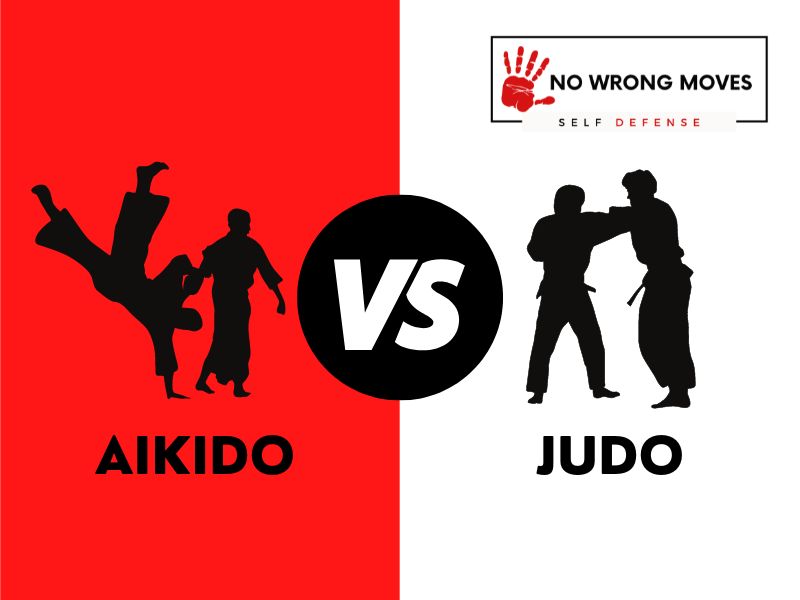
Many people in the martial arts community debate whether Aikido or Judo is the better practice. While both offer unique benefits and principles, there are some key differences that set them apart.
The main difference between Aikido and Judo is in their intention and purpose. Aikido was created with the intention of resolving conflicts without injury to either party, while Judo was designed as a sport.
Aikido focuses on redirecting an attacker's energy and using their own momentum against them, while Judo relies more on throwing and grappling techniques.
Aikido also incorporates the use of traditional weapons, such as swords and staffs. Judo does not incorporate weapons in its practice.
Aikido emphasizes the mental and spiritual aspects of training, such as cultivating a calm and non-aggressive mindset, while Judo primarily focuses on physical technique and skill.
Overall, both Aikido and Judo can be effective forms of self-defense, but they approach it in different ways.
What We Know About Aikido
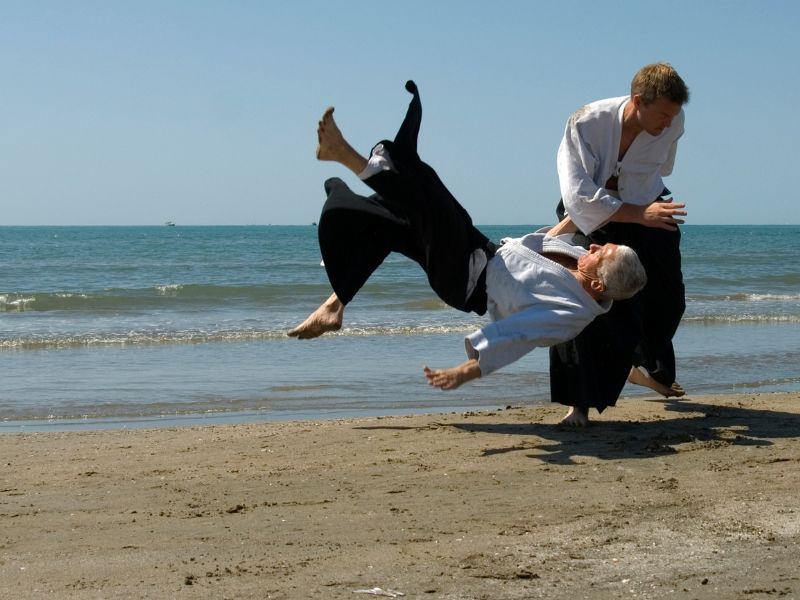
Aikido is a martial art that was created in the early 20th century by Morihei Ueshiba. It is based on the principles of budo, which follows the code of ethics of bushido. Bushido is the code of ethics that samurai follow and teaches justice, courage, benevolence, politeness, honesty, honor, and loyalty.
Aikido is a combination of aikijujitsu, which is a martial art that uses both unarmed and armed fighting techniques, and iai-jutsu, which is a martial art that uses swordsmanship.
Aikido consists of three main elements: taijutsu (unarmed combat), kenjutsu (sword fighting), and jojutsu (staff fighting). Taijutsu includes punches, kicks, throws, and joint locks. Kenjutsu consists of strikes with the sword, while jojutsu focuses on using the staff as a weapon. Aikido also incorporates philosophy and meditation into its training. The goal of aikido is to blend with an opponent's energy and redirect it rather than meeting force with force.
Aikido is often described as "the way of harmony." This refers to the idea that practitioners should seek to harmonize their own energy with that of their opponents. This principle can be applied both physically and spiritually. By synchronizing their movements with those of their opponents, aikido practitioners can neutralize an attack without causing injury.
On a spiritual level, practitioners strive to develop a sense of compassion and understanding for others. In this way, aikido can be seen as a path to self-improvement and inner peace.
What We Know About Judo
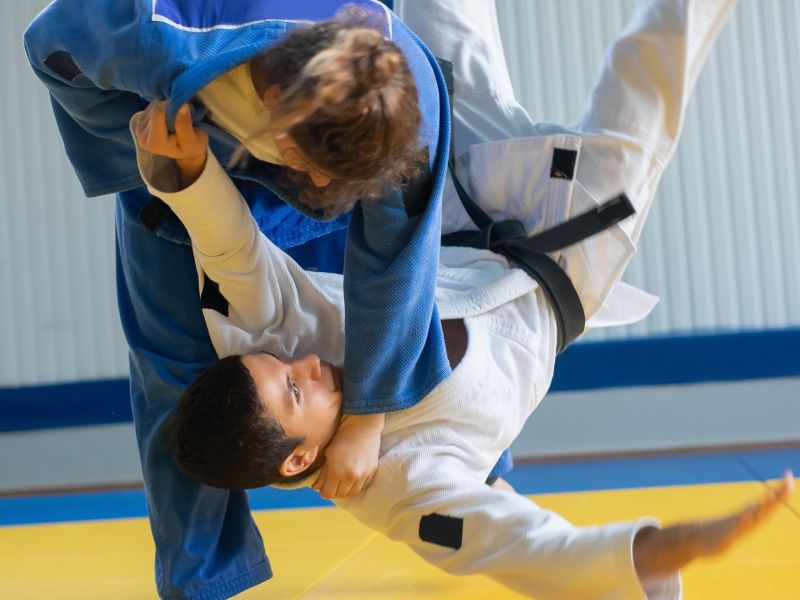
As the Meiji era began in 1868, Japan went through a modernization which led to a decline in the use of Jiu-Jitsu. This martial art had been practiced exclusively by the samurai class, who were losing their importance and power in Japan.
Jiu-jitsu was then associated with thugs and brawlers. However, one man saw potential in jiu-jitsu and decided to revive it.
That man was Jigoro Kano, who is considered the founder of Judo. Kano was born in 1860 into a family of samurai who had lost their status and power several generations earlier.
Despite this, he was able to attend Tokyo Imperial University, where he studied Western philosophy, literature, and science.
Kano believed that Jiu-Jitsu could be used for more than just fighting, and he set out to create a system that could be used for physical education, mental discipline, and character development.
In 1882, he founded the Kodokan Judo Institute, which is still in operation today. Judo has since become one of the most popular martial arts in the world.
Of course, this is only a brief history and understanding of Aikido and Judo, but if you want to go deeper into either art, be sure to check out the following posts:
Now, back to the comparison...
Let's look at the origins of the respective disciplines and then compare the key elements of their practices. You will be able to understand some of their similarities and differences a bit better afterward.
| Aikido | Judo | |
| Origins | Japanese | Japanese |
Key Elements Of Aikido
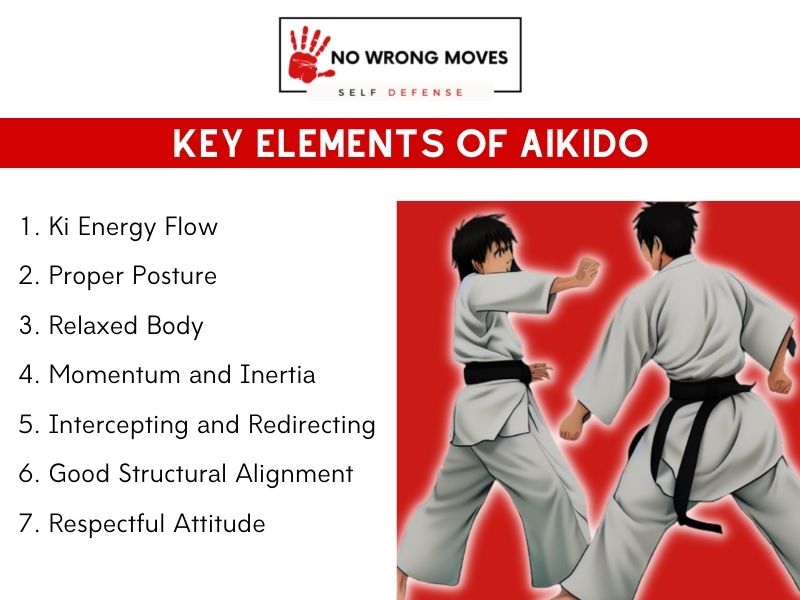
Aikido is a Japanese martial art that focuses on the proper stance and balance of the practitioner. Proper stance and balance are critical components of Aikido, as they provide the foundation for all other techniques.
A stable and balanced stance allows the practitioner to move fluidly and with control, making it easier to perform techniques effectively.
In Aikido, practitioners learn to redirect their opponent's energy rather than using force against them. Redirecting energy is one of the fundamental aspects of Aikido, and it's difficult to separate this idea from the sport itself.
Through properly redirecting an opponent's energy, Aikido practitioners can use their opponent's momentum against them, rather than relying on their own strength.
Apart from physical techniques, Aikido also emphasizes controlling one's emotions. Practitioners learn to remain calm and focused, even in stressful situations.
Aikido also places a strong emphasis on non-violent conflict resolution. The first option in any situation is to find a peaceful resolution, rather than resorting to violence.
Remember that in Aikido, the first option is not violence, and it reflects the overall philosophy of Aikido as a martial art focused on peace and harmony.
Key Elements Of Judo
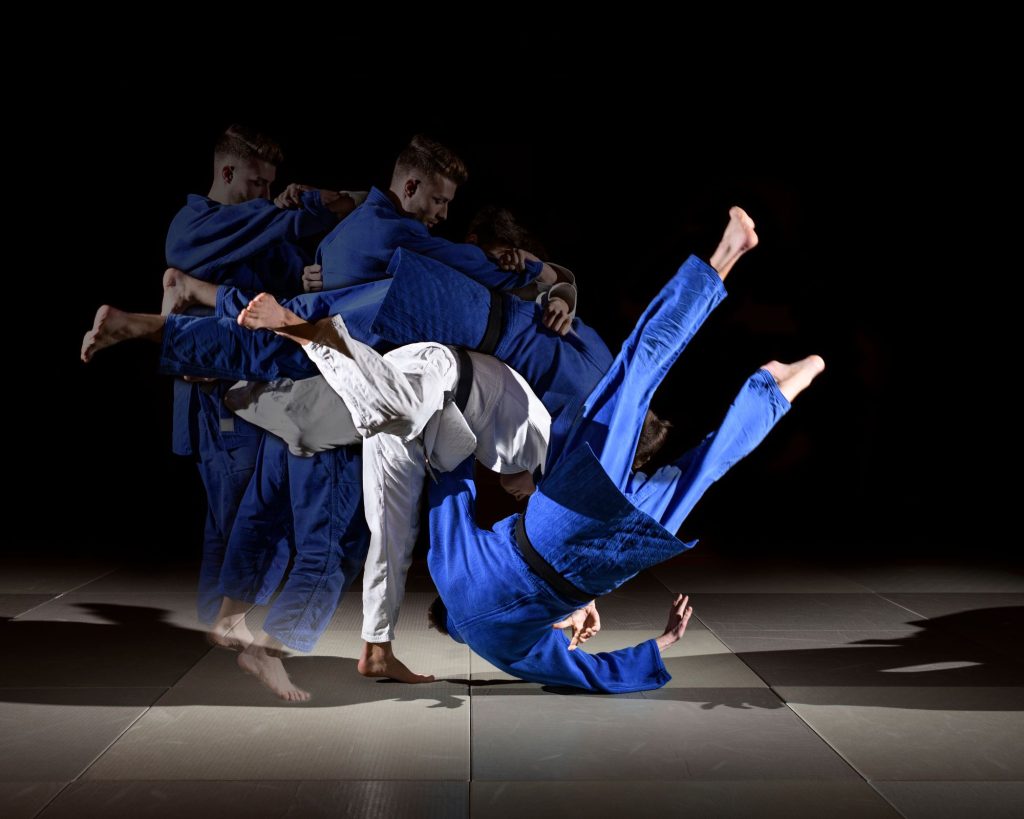
There are several key elements that make up Judo, each of which is crucial to mastering the art. One of the most important is maintaining proper stance and footwork. This allows a Judoka to move quickly and easily, while also providing a solid foundation for throwing techniques.
Another key element of Judo is gripping the opponent. A Judoka must know how to grip their opponent in a way that allows them to control their movements and set up throws.
Proper gripping technique is essential to success in Judo, as it can make the difference between a failed attempt and a successful throw.
Fundamental throwing techniques are also a crucial element of Judo. These techniques, such as hip throws and foot sweeps, allow a Judoka to off-balance their opponent and throw them to the ground.
Kuzushi, or off-balancing the opponent, is another key element of Judo. By breaking the opponent's balance, a Judoka can create an opening for a throw or other technique.
Proper use of momentum and strength is also important, as a Judoka must know how to use their own momentum and strength in combination with their opponent's to achieve their goals.
Timing and distance are also critical elements of Judo. A Judoka must know when to initiate an attack and when to wait for the right moment.
Finally, knowing when and how to finish a throw is a key element of Judo. Once a Judoka has successfully executed a throw, they must know how to control their opponent and avoid being thrown themselves.
Proper finishing technique is essential to successfully completing a throw and avoiding injury. Mastering all of these key elements is essential to becoming a successful Judoka.
Another thing I think is important to look at is the different rankings and levels in each art. if you are looking to take up either Aikido or Judo, whether as a hobbyist or to compete, you need to understand the different levels of proficiency and what is required for testing and ranking.
Aikido Rankings & Levels
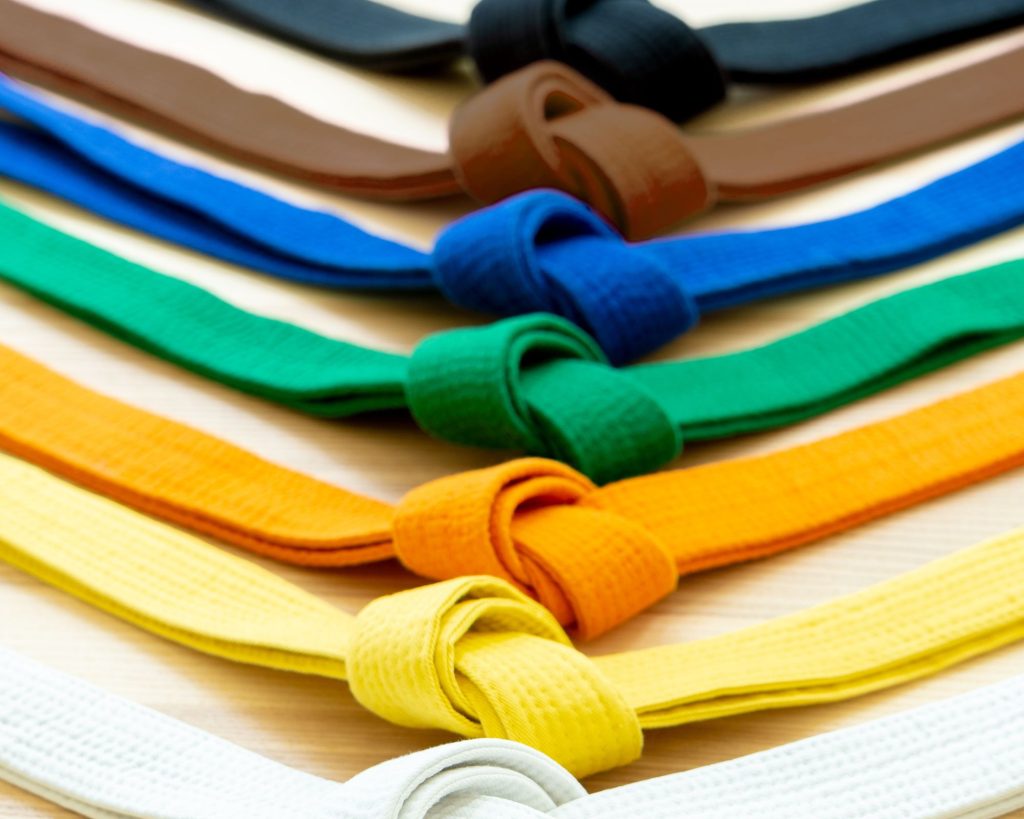
Aikido is a discipline that has many different levels, each represented by a different colored belt. The first level is white belt, which is for beginner students. Once you have mastered the basics of Aikido, you can move on to the blue belt, which is for intermediate students.
And finally, once you have mastered the art of Aikido, you can become a black belt, which is the highest level.
There are three degrees as a black belt holder: 1st dan, 2nd dan, and 3rd dan black belt. In order to achieve each of these degrees, you must pass a test that proves your mastery of Aikido.
There are also other ranks and colors that exist outside of the traditional ranking system. In some Western Aikido schools, there are more ranks added in between 1st dan and 2nd dan.
These ranks can be any combination of colors, and it allows for students to be promoted at a more gradual pace and helps to distinguish between students of different ranks.
Judo Rankings & Levels

In the current Judo ranking system, students are placed into six descending numerical grades. Beginners start with the sixth kyū (六級, rokkyū) and wear a light blue belt until they attain an elementary level of instruction.
Once they've achieved this, they are promoted to the fifth kyū (五級, gokyū) and begin wearing a white belt. The white belt is worn until the fourth kyū (四級, yonkyū) is achieved.
The remaining three grades (third kyū (三級, sankyū), second kyū (二級, nikyū) and first kyū (一級, ikkyū) are all indicated with brown belts (for seniors) or purple belts (for juniors).
The first kyū (一級, ikkyū) is the final kyū rank before promotion to the first-degree black belt (shodan). The dan ranks, in practice, comprise of 10 levels, which are ranked in ascending numerical order.
Aikido Vs. Judo Attire
This section simply compares the clothing and uniforms that practitioners wear in combat.
Aikido Attire:
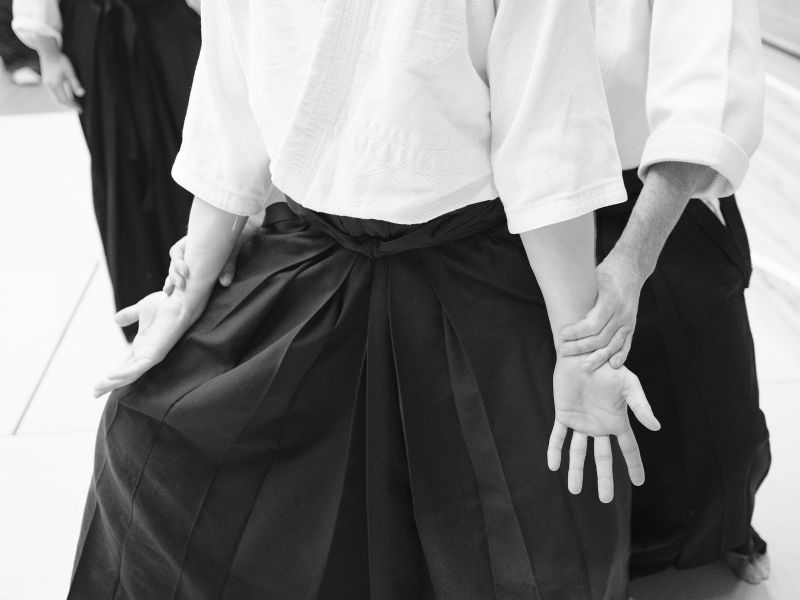
Aikido is a discipline that has many different levels, each represented by a different colored belt. The first level is white belt, which is for beginner students. Once you have mastered the basics of Aikido, you can move on to the blue belt, which is for intermediate students.
And finally, once you have mastered the art of Aikido, you can become a black belt, which is the highest level.
There are three degrees as a black belt holder: 1st dan, 2nd dan, and 3rd dan black belt. In order to achieve each of these degrees, you must pass a test that proves your mastery of Aikido.
There are also other ranks and colors that exist outside of the traditional ranking system. In some Western Aikido schools, there are more ranks added in between 1st dan and 2nd dan.
These ranks can be any combination of colors, and it allows for students to be promoted at a more gradual pace and helps to distinguish between students of different ranks.
Judo Attire:
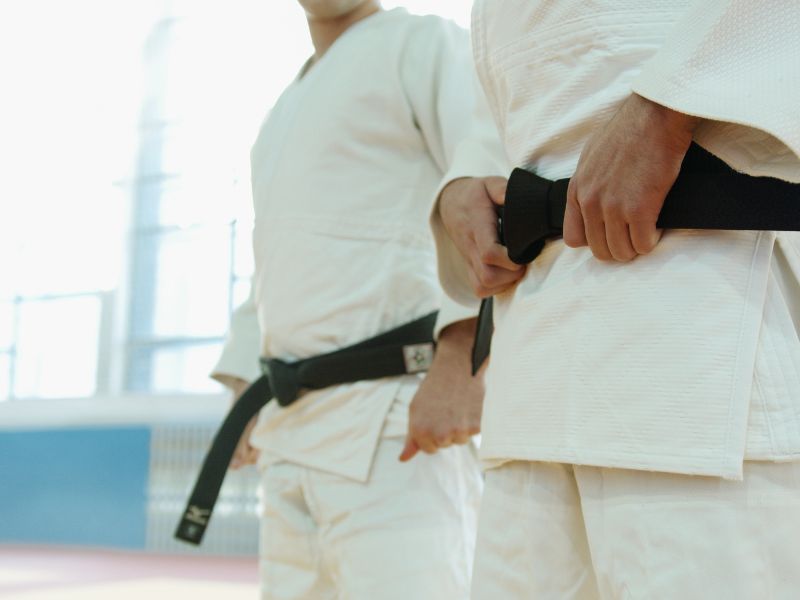
Judo practitioners wear a gi, which is a type of uniform made of heavy cotton fabric. The gi includes a jacket, pants, and a belt. In competition, the color of the belt indicates the practitioner's rank.
What A Typical Aikido Training Session Looks Like
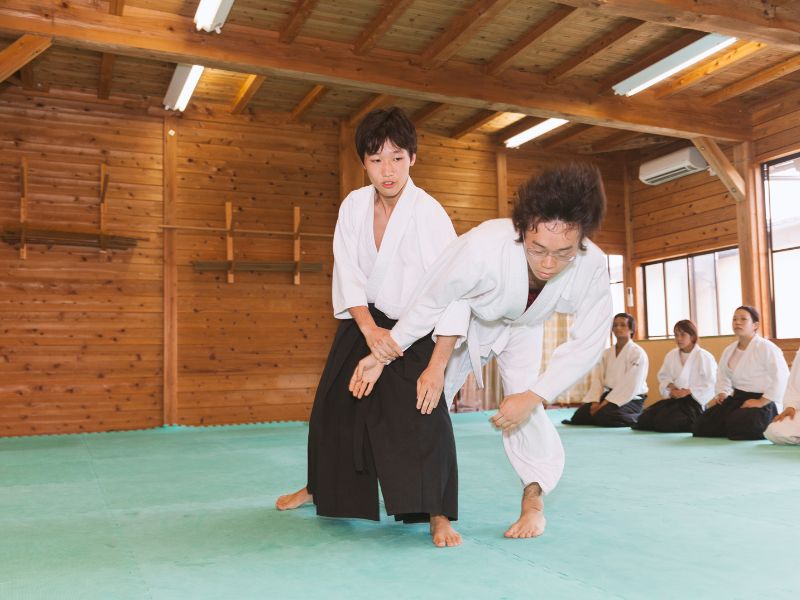
If you've ever wondered what an Aikido training session is like, here's a quick rundown.
A typical session will begin with some basic warm-up exercises to get your blood flowing.
Next, you'll move on to the kihon, or basics and fundamentals. Here you'll learn the basic techniques that form the foundation of Aikido.
Once you've mastered the kihon, you'll move on to more advanced techniques. These will require more precise execution and timing.
Finally, you'll learn how to apply the techniques you've learned through sparring. This may involve learning how to defend yourself against a weapon or multiple attackers.
Throughout all of these stages, it's important to maintain a calm and empty mind (mushin) and to always be open to new ideas (shoshin). Only then can you truly master the essence of Aikido.
What A Typical Judo Training Session Looks Like
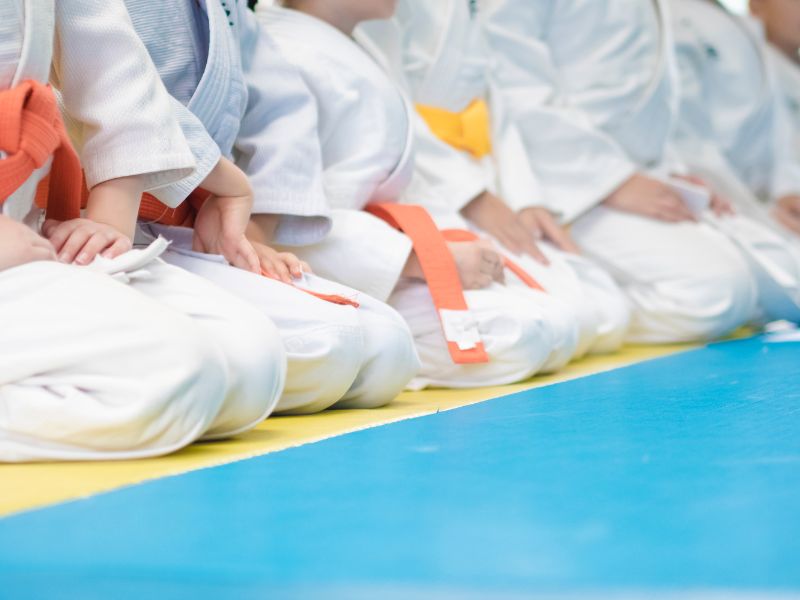
Most judo classes will start with a warm-up. This usually consists of light calisthenics and stretching. The purpose of the warm-up is to get your body ready for the physical activity to come.
After the warm-up, you will learn various judo techniques. These may include throws, joint locks, and chokeholds. You will likely practice these techniques with a partner.
Next, randori. Randori is a type of free sparring that is common in judo. In randori, you and your partner will take turns attacking and defending. This is a good way to practice your techniques in a more realistic setting.
After that, kata are pre-arranged patterns of techniques that are performed with a partner. There are many different kata, each with its own specific purpose. Some kata are designed to teach self-defense, while others are designed to teach offensive techniques.
At the end of class, most instructors will have their students do a cool-down. This usually consists of light stretching and calisthenics. The purpose of the cool-down is to help your body recover from the physical activity it has just undergone
If the last few sections have been a bit full-on or a bit too technical, you will like this next section! Why? Because who doesn't love a good martial arts flick?
Both Aikido and Judo have been featured in a number of films and TV shows, so if you want to learn more about them, then entertain yourself with the following 👊
Aikido Movies

These are some of the top movies and shows with Aikido in them:
- The Blind Swordsman: Zatoichi (2003)
- The Last Samurai (2003)
- Kill Bill: Vol. 1 (2003) and Kill Bill: Vol. 2 (2004)
- Street Fighter (1994)
- Ong-Bak: The Thai Warrior (2003)
- The Challenge (1982) TV series
Aikido can also be seen in popular shows such as:
- Daredevil (2015) TV series
- Arrow (2012) TV series
- Alias (2001-2006) TV series
- Chuck (2007-2012) TV series
- Xena: Warrior Princess (1995-2001) TV series
Some cool movies with Judo in them are:
- Bloodsport (1988)
- Tekken (2010)
- The Grandmaster (2013)
- Judo Story (1995)
Conclusion: Aikido Vs. Judo
I hope you now have a deeper understanding of Aikido and Judo. In all truth, it is not about which discipline is "better" as they each have their pros and cons. If you do plan on starting classes for either, please check out my other related posts, as I have tried my best to answer all the FAQs related to the art.
Feel free to share this post and any graphics you like, and of course, if you have any questions or thoughts, drop them below or shoot me an email, and I will be happy to assist 🙂
[author-box-jpx-fitness]
